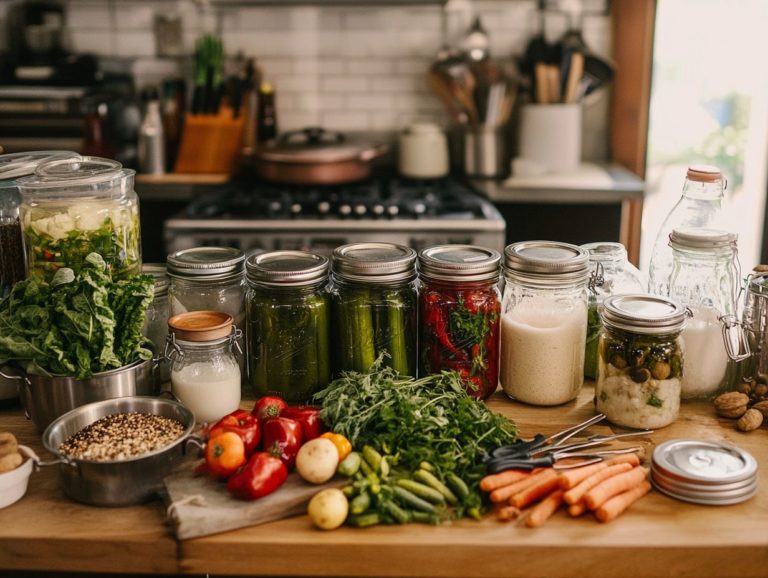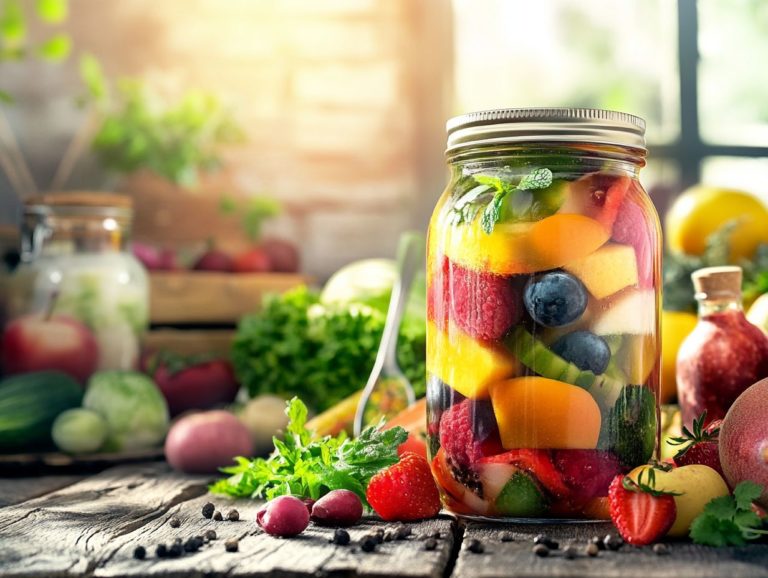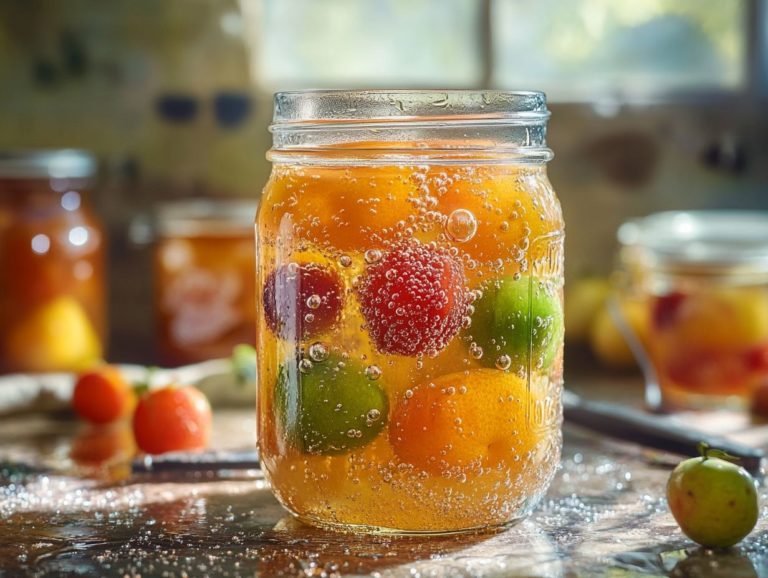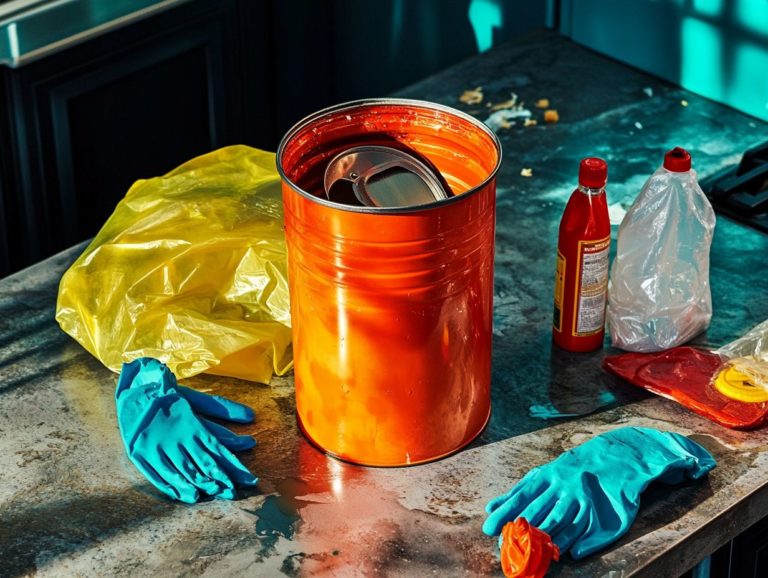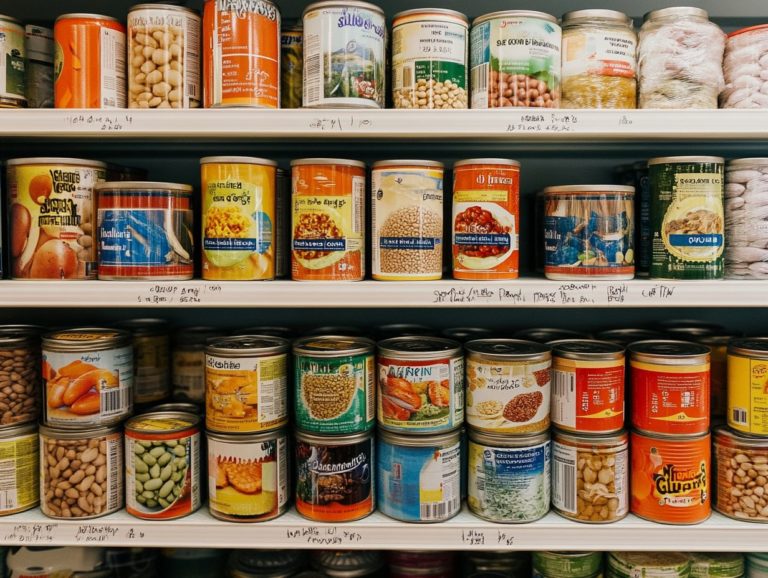Canning Texture Troubles: Quick Fixes
Canning can be a rewarding way to preserve your favorite foods. However, you may grapple with texture issues that leave you frustrated with your efforts.
Whether you’re dealing with overly soft fruit or gelatinous jams, it’s crucial for any home canner to understand the common causes and symptoms of these texture troubles.
This article highlights quick fixes to tackle these problems, shares best practices to prevent them in the future, and explores alternative preservation methods.
Immerse yourself in this guide to ensure your canned goods are not only delicious but also visually appealing!
Contents
- Key Takeaways:
- Understanding Canning Texture Troubles
- Quick Fixes for Common Texture Issues
- Preventing Texture Issues in Canning
- Alternative Methods for Preserving Food
- Frequently Asked Questions
- What are common texture issues when canning and how can I fix them?
- Why are my canned goods coming out mushy and how can I prevent this?
- What should I do if my canned goods have a watery consistency?
- How can I prevent my canned goods from separating?
- Are there any quick fixes for texture issues in canned goods?
- Can I still eat my canned goods if the texture is off?
Key Takeaways:
Thoroughly understanding common texture issues in canning can help troubleshoot and prevent them.
Quick fixes like adjusting cooking times and using correct canning methods can correct texture problems.
You can also explore different ways to preserve food, offering various texture options for your preserved goods.
Understanding Canning Texture Troubles
Understanding the intricacies of canning texture troubles is essential for anyone looking to turn cucumbers into tasty pickles. Knowing this helps you create a final product that is both safe to consume and enjoyable for the palate.
A successful canning process relies on maintaining the correct temperature, pressure, and method, all of which significantly influence your pickles’ texture. Common issues like soft or limp results often arise from improper sealing, insufficient brine, or ingredients lacking adequate calcium.
By following established guidelines from reputable sources such as the USDA and the National Center for Home Food Preservation, you can effectively avoid these pitfalls and achieve the pickles of your dreams.
Common Causes and Symptoms
Identifying the common causes and symptoms of texture issues in canned pickles is essential for your home preservation success. A variety of factors can contribute to these problems, and troubleshooting common canning problems can save you countless batches.
Improper boiling times can leave your pickles either too soft or excessively crunchy, missing that ideal, satisfying bite. It’s crucial to maintain the right water levels. Too little can cause overheating, while too much can dilute flavors and lead to sogginess.
Temperature inconsistencies during the canning process can disrupt the necessary conditions for preservation, leading to undesirable textures. By understanding these factors, you not only secure the quality of your canned pickles but also ensure a seamless preservation experience.
Quick Fixes for Common Texture Issues
When you encounter common texture issues with your canned pickles, knowing how to fix canned food texture issues can help you salvage the batch and guarantee a quality product worthy of sharing with family and friends.
These remedies often require straightforward adjustments, such as eliminating excess air from the jars, verifying the appropriate brine acidity, and applying techniques to rectify limp or soft textures. For instance, a brief soak in a calcium-rich solution can effectively restore the firmness of your pickles and elevate them to the standard you desire.
Tips for Correcting Texture Problems
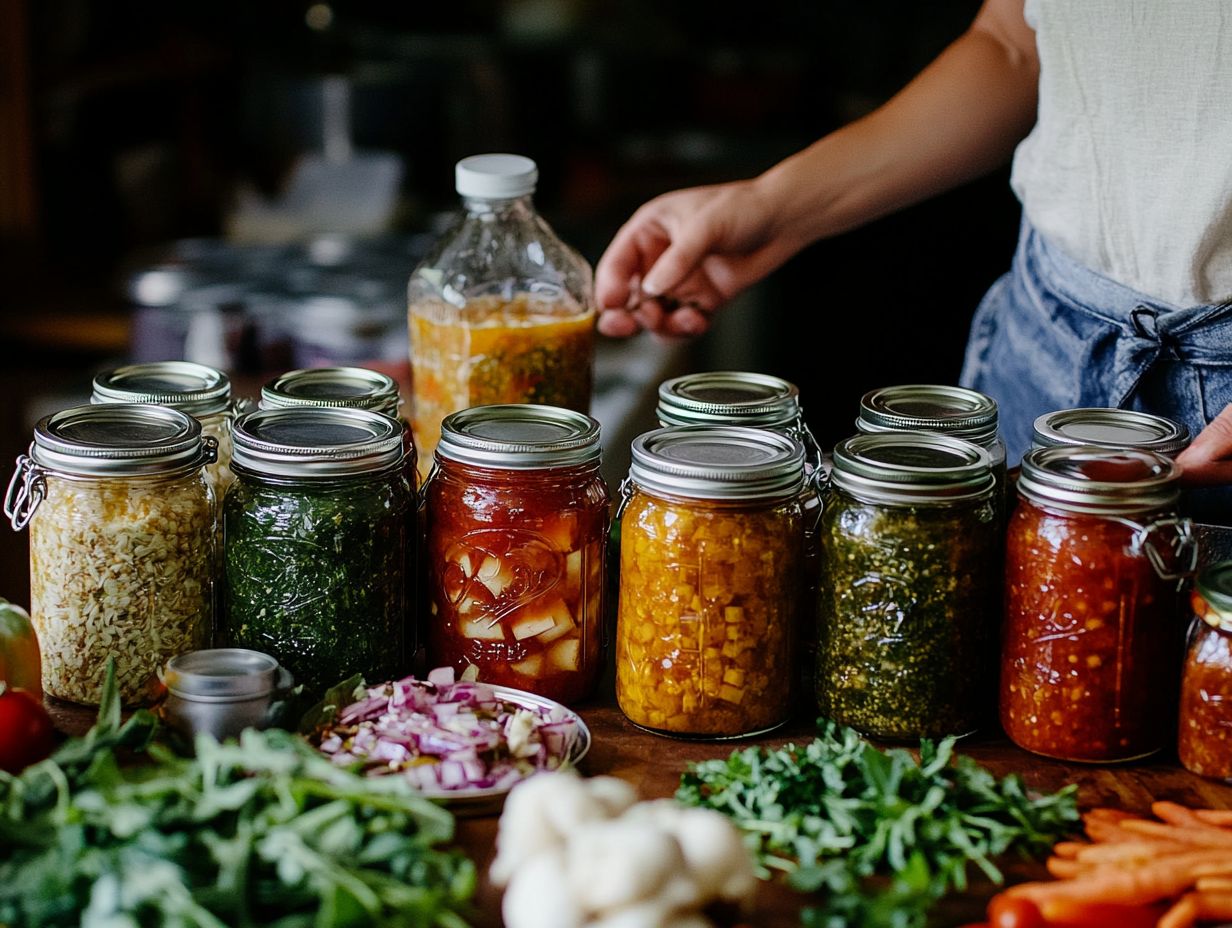
To effectively correct texture problems in your pickles, it s essential to implement specific strategies. Focus on adjusting the acid levels of your brine and ensuring the right ingredient combinations.
By carefully manipulating these components, you can significantly enhance the crunchiness and overall mouthfeel of your preserved vegetables. The role of acidity is crucial; it not only aids in preservation by inhibiting spoilage organisms but also impacts the firmness of the produce. A higher acid concentration can help maintain a crisp texture, while adjusting the brine involves experimenting with different ratios of ingredients, such as sugars or spices, to elevate your final product.
Incorporating techniques like using fresh, high-quality produce and adding natural firming agents can also set you on the path to achieving that coveted pickle perfection.
Try these tips today and elevate your canning game!
Preventing Texture Issues in Canning
Want perfect pickles? Here s how to prevent texture issues in canning! It s essential that you adopt a proactive approach centered around best practices to guarantee both optimal texture and food safety from the very beginning.
A thorough understanding of the canning process demands careful attention. Selecting the right cucumbers and crafting an appropriate brine are critical steps. Be diligent in following the recommended boiling times and temperatures.
By adhering closely to guidelines from reputable experts and organizations like the USDA and the National Center for Home Food Preservation, you can greatly minimize the risk of common texture problems that could compromise your jars of pickles.
Best Practices for Ensuring Optimal Texture
Achieving the optimal texture in your canned pickles is about using best practices. Incorporate ingredients like calcium hydroxide, a natural mineral that helps keep pickles crisp, alum, and calcium chloride to elevate that delightful crispness.
You can enhance the quality of your pickles by pre-soaking your cucumbers in a calcium solution. This step fortifies cell walls and ensures that satisfying crunch you desire.
Pay attention to the acidity level in your brine. Aim for a pH of 4.6 or lower. This ensures safety and effective preservation.
This careful balance not only extends shelf life but also enriches the flavor profile, making your pickles even more delightful. By following these tailored techniques, you can achieve the perfect harmony of texture and taste, taking your pickling skills to an entirely new level.
Alternative Methods for Preserving Food
Exploring alternative methods for preserving food, like fermentation, opens up a realm of possibilities for you as a home canner. These innovative techniques help maintain the texture and flavor of your food while diversifying your preservation repertoire.
Fermentation blends preservation with developing unique flavors. This technique has captured the hearts of many food enthusiasts. By diving into different preservation methods, you unlock a world of creativity whether you re fermenting, pickling, or experimenting with other cutting-edge techniques.
Exploring Other Preservation Techniques
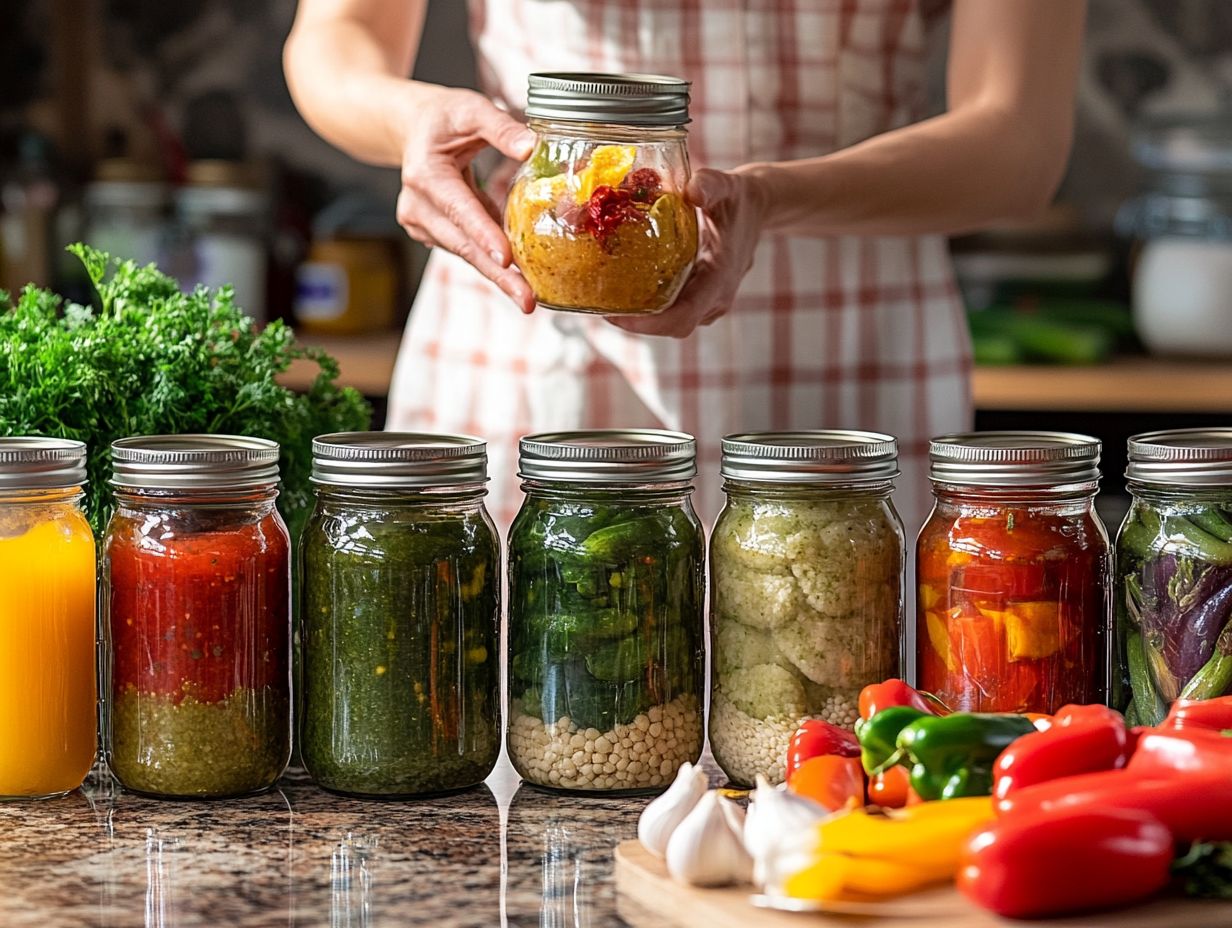
Exploring various preservation techniques unveils a wealth of solutions that maintain food quality and elevate flavor through methods like fermentation and acidification.
By stepping beyond traditional canning practices, you can embrace the art of dehydration, which removes moisture to prevent spoilage while intensifying the natural tastes of fruits and vegetables.
Freezing, another superb technique, captures freshness and nutritional value, allowing you to savor seasonal produce all year round without sacrificing flavor or texture.
Concurrently, fermentation introduces unique flavors and enhances nutritional profiles, resulting in probiotic-rich foods that support gut health. Each of these methods presents distinct advantages, ensuring that your food remains delicious and enjoyable long after the harvest.
Frequently Asked Questions
What are common texture issues when canning and how can I fix them?
- Common texture issues when canning include mushy or rubbery texture, watery or runny consistency, and separation of ingredients.
- To fix these issues, follow proper canning procedures and use high-quality, fresh ingredients.
- Adjust processing times and temperatures accordingly, and ensure jars are sealed properly.
- You can also try adding a thickening agent or reprocessing the canned goods.
Why are my canned goods coming out mushy and how can I prevent this?
- Mushy texture in canned goods can be caused by overcooking or using overripe produce.
- To prevent this, cook for the recommended processing time and use produce that is at its peak freshness.
- Adding a bit of acidity, such as vinegar or lemon juice, can help to firm up the texture.
What should I do if my canned goods have a watery consistency?
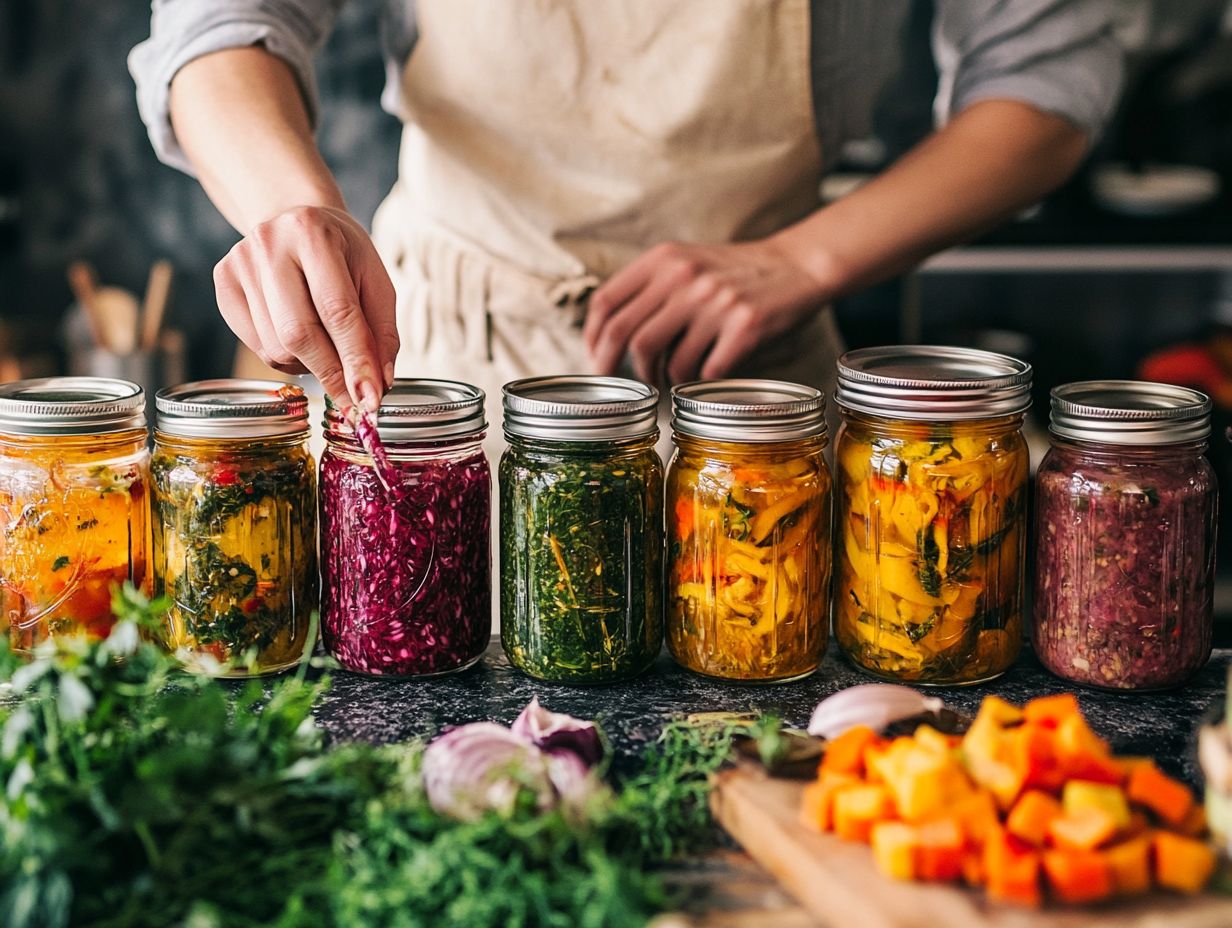
If your canned goods are watery, it may mean they were underprocessed or made with low-quality ingredients. To fix this, process the jars again for the recommended time or add a thickening agent like cornstarch or pectin before canning.
How can I prevent my canned goods from separating?
Separation can happen if the mixture isn t stirred well or the ingredients aren t combined properly. Thorough mixing is key to preventing this issue.
If separation still occurs, shake the jar gently before opening to redistribute the contents.
Are there any quick fixes for texture issues in canned goods?
You can also try adding a bit of salt or sugar to improve the texture of your canned goods. Blending or pureeing them can also create a smoother consistency.
Can I still eat my canned goods if the texture is off?
If the texture is off, don t worry! It s usually safe to eat, but the quality may not be the best. If it looks or feels strange, it’s better to toss it.
To achieve a better texture, consider using fresh ingredients like Cucumber or Pickle Crisp . For more guidance, check out resources from the University of Minnesota or ask a Master Gardener.

